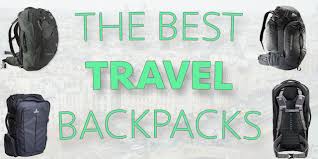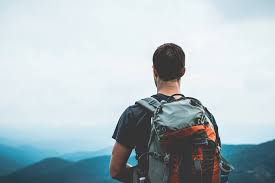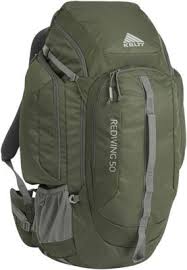kelty 44l backpack

Known for its hot, humid climate. The land of flip-flops and hippie pants. Sounds like a pretty easy part of the world to pack for, right? Well, yes and no. It’s true that packing for my 7-week trip was not as difficult as the dual-climate trip I had to pack for around the same time last year, but it also wasn’t as easy a throwing some tank tops and flip flops in a bag, either. Here’s why this trip was still tricky: Here’s how I dealt with these challenges: In the end, here’s a look at what exactly went into my Kelty Redwing 44-liter backpack: This may seem like a lot to fit into a 44L bag, but I assure you that my Kelty is quite spacious and has lots of useful pockets! (Check out the bag here!) A backpack is ideal for Southeast Asia since it’s much easier to carry around than rolling luggage in this part of the world. I took my trusty Pacsafe backpack for this trip, since it’s already quite dirty and couldn’t get any worse on buses or tuk-tuks in Asia.

It’s also slash-proof and can be locked around bike baskets and chairs, making me feel safer traveling with it.
zupa backpackThis bag, along with my purse, is with me at all times on travel days.
veto backpack ebay I bought a new purse for this trip — an Overland Equipment Donner bag.
ftb infinity best backpackIt’s roomy, yet has a lot of pockets and space for a water bottle or two on the sides.
roots backpack costco warrantyIt’s super practical and useful for a traveler like me.
zoomlite backpack(This sadly isn’t sold anymore, but if you’re looking for a similar one, this Travelon Bucket Bag is good!)
m4800 backpack
In my purse (on travel days): As a blogger, there’s some stuff that I just can’t leave at home — like my computer, camera gear, etc. On this trip, however, I will admit that I could have survived with less clothing than I took. I could have left a skirt and a pair of pants at home. I could have just brought 1 swim suit, as I only ended up spending a week at the beach. And I could have cut the number of shirts I took in half. If not for the time in London and Hong Kong, I wouldn’t have needed the down jacket, the TOMs, an umbrella, or my hair dryer, either. I could have brought the bare minimum and just gone shopping at markets along the way. In this part of the world, it’s incredibly easy to accumulate things. Clothing is cheap at every market, and since it’s cheap you can get rid of it along the way when you get tired of it. And speaking of cheap clothing at markets… I added multiple tank tops and t-shirts to my bag in Cambodia, along with a pair of “hippie” pants and 2 tailored dresses in Vietnam… not to mention other gifts/souvenirs I bought!

I ended up buying a larger secondary backpack in Bangkok, as my main bag was mostly full when I left home, and my Pacsafe isn’t very roomy, either. Next time: less shopping! In the end, I’m REALLY glad I brought those thin pants, zip-up hoodie, and socks. It got quite chilly in northern Vietnam and downright cold in northern Thailand at night. I was also really happy that I brought a silk sleep sheet. I only used it once — on an overnight train in Vietnam — but it was an instance where everyone else in my train car was jealous of me. If I had stayed in more hostels, I’m sure I would have gotten even more use out of it. It also takes up virtually no room, so it’s a no brainer to leave on my packing list. I also really loved my Kelty Redwing 44-liter backpack – this was the first time I used this smaller backpack, and it honestly was perfect for traveling in this part of the world. In Southeast Asia, you’re often lugging your bag in and out of all sorts of vehicles, from buses to vans to songthaews to tuk-tuks.

Having something small and compact is ideal, and this is one part of the world I would almost always recommend taking a backpack as opposed to rolling luggage. And, even though it’s not a tangible item, I also always recommend packing a good travel insurance policy! That way everything from lost luggage to a bad accident is covered – because you just never know! I recommend World Nomads for basic (and really affordable) travel insurance. *Note: There are affiliate links in this post, meaning that if you click on an Amazon link and buy anything, I get a small percentage. It doesn’t cost you any more, but contributes a little bit to my travel fund! Backpack is hydration compatibleSilver-coated rain coverPadded back panel, shoulder straps and waist beltSternum strapWater bottle and BlackBerry/iPhone/GPS pocketsOrganizer compartmentThis category is going to fit the majority of all first time travellers as well as many long term travellers. You are mainly visiting populated towns and cities, rather than heading into the wilderness for prolonged periods.

You need space to take some basic home comforts with you but won’t be bringing the kitchen sink.You need a 50 – 80 Litre Backpack. Typically Front loading packs that zip open all the way round to allow quick access to all your stuff at once.This category is for people who can live with the bare minimum. By sticking with a small pack you can fly “Carry-on only”, saving you time and money at the airport. Your bag is small enough and light enough to make wandering the world a breeze and back ache a thing of the past.Remember, in addition to your backpack, you can also take a hand bag/shoulder bag, a camera bag and a laptop bag (if you can’t leave your computer at home) on most planes. This gives you a lot of flexibility but be aware that having your electronics out in the open makes you a target for crime and also for rain!You need a 30-50 litre travel backpack.Check out some of the best rated Carry on Backpacks NOTE: Some packs include an attached daypack. The carry on sized portion of the pack may not include the attached daypack.

Can’t live without your home comforts? Need 20 different outfits? Can’t deal with carrying the heavy bags?If you can’t travel anywhere without your hair straighteners and 3 bottles of product then you are a comfort traveller.If you have a back injury or are perhaps backpacking a little later in life and don’t want to spend hours carrying a heavy backpack, you are a comfort traveller.You need a backpack with wheels!These come in many sizes, so choose a size that suits for the amount of luggage you want to take and then revel in the fact you rarely have to carry it.Take a look at some top rated options of various sizes: Wheeled BackpacksIf you’ll be heading off the beaten track, trekking and through all weather conditions you are an adventure traveller. Long distances carrying a heavy pack can be tough. You need something light but big enough to hold everything you could need to survive in the wilderness.You also need to keep your equipment protected from the elements.You need an all terrain, all weather backpack.

Top loading packs with lots of utility add ons.These are fine alternatives to a regular travel backpack if you prefer this style of pack.Browse the Top rated Hiking backpacksOnce you choose you backpack, you are going to need insurance on the road to cover all the stuff you are putting in it! If you want to save 5% on the best travel insurance for backpackers, yes this is the one recommended by lonely planet and travel fish, You can use THIS LINK and the code WN5DP and have peace of mind with World Nomads insurance.I also wanted to mention, if you want a discount on AirBnB, the private room rental service that is better value than hotels and hostels in most countries, use this link to get $25 off your first stayWe’ve made some suggestions for good choices on the market but there are many more. Below we cover all the FAQs that people looking for the perfect backpack need answered.Your backpack is your life on the road. It’s one of the most important investments you’ll make. Choosing some low price backpack in order to save a few dollars at the outset is a false economy – especially when the stitching comes apart as you are running to catch a bus across the busy streets of Bangkok.

Collecting your underwear from the gutter whilst tuk-tuks dodge around you is not an ideal travel situation.You need a durable pack.A great pack will last for years and won’t let you down whilst on the road. Don’t skimp and buy some cheap, pseudo waterproof piece of crap to save yourself $50. Most good packs, especially the full size (60-80 Litre) ones, are going to be over $100. You may find some good sale prices around $75. If you buy a $30 wal-mart backpack… good luck.Backpack manufacturers love to use terms that mean very little to the uninitiated. What you really want to know is: Will this backpack fit all my stuff?We’ll discuss the “style of travel” options later in this article. The three concepts I want to convey right now are:Unless you are going on a super-remote hike where you need to carry absolutely everything for survival with you, it’s unlikely you’ll ever need 80 litres of pack per person.This is going to come down to what you really need and just how much you can live without.

Large Pack capacity = 60 to 80 litres = 3,500 to 5,000 cubic inches Medium Pack capacity = 30 to 50 litres = 1,800 to 3,000 cubic inchesSmall Pack capacity = 10 to 25 litres = 600 to 1,500 cubic inches.Few travel backpackers head out with less than 30 litres of pack. But a small pack is often taken as a second pack that can be worn on the front or as a side bag with shoulder strap.Day packs are very useful. A 10 to 15 litre daypack will fit all your basics for day-trips and then you can leave your main pack at the hostel. As well as daytrip use, we have found another great advantage for the daypack. If you are serious about overnight hiking trips then a slightly larger pack (20 to 30 litres) may be more suitable, but you have to balance that occasional need with the everyday reality of carrying an additional large pack – or consider the fold up bag option.On long train/bus rides and at the airport, everything we need for the trip – snacks, cameras, headphones, ipods etc. and certain other valuables go in the daypack.

Non-valuable items such as clothes and toiletries go in the main pack and into the hold or onto the luggage racks. This means we never need access to the main pack whilst travelling .A day pack can either be worn forward – over your chest like a reverse backpack – or, on many models of backpack, it can be zipped or clipped onto the main pack.Sea to Summit packable Daypack – As pictured in the infographic above, this folds down to fit in your pocket.If you are travelling solo then you’ll need everything for the whole trip in one pack.Travelling with friends you are probably going to want to have your own stuff seperated. But, if you can share certain things, like shampoo, than this will help reduce the total weight of luggage in your group.If travelling as a couple, luggage can become even easier as you can share a lot of things. Less stuff means less total backpack size and weight needed and you can even share backpack space. Our personal setup is one standard 65 litre pack with 10 litre daypack that zips on and one 30 litre dry pack (this is a kayak pack that can be partially submersed in water and remain waterproof – piece of mind for our laptops/cameras during monsoon season).

You can read our full review of the Overboard Dry Pack.Our setup only really works for couples. Also, as bloggers we have way more stuff (laptops, tripods, DSLR camera) than the average traveller may need.A standard waterproof backpack may handle a European summer shower. It won’t necessarily fare so well in a full Asian monsoon.Waterproof ratings range from 1 to 5. “One” being something that is proofed against light rain, all the way up to “five” which can resist indefinite, complete submersion.Bare in mind, Water resistant & Waterproof are also two different things. A water resistant pack will take sometime, depending on the quality, to allow rain inside the pack, but prolonged exposure will almost certainly result in damp belongings.If you choose a pack that is water resistant rather than waterproof, you’ll want to consider a Backpack Rain Cover. If you are travelling mainly in dry climate countries, or only expecting light rain, a water resistant pack is sufficient.You’ll potentially be carrying your backpack for many hours at a time.

It may be a hot day. It may be raining. You can’t control certain problems but you can get a pack that fits comfortably and minimise the amount of weight by selective packing.Here are some useful features to look out for that improve comfort:Another factor that will affect comfort is choosing a pack that is a good fit for your body shape and, specifically, torso length.As well as capacity and strap adjustments, good manufactures size backpack models to fit different torso lengths. So if you’ll be buying your pack online its useful to measure your torso length in advance to be able to order the best fitting pack.This is done more easily if you have a friend to assist you. Here is how you do it.Manufacturer guidelines vary but typical sizes line up as follows for torso length:*Note: Overall backpack size is sometimes listed in Inches. This is not the same as the torso length measurement.Price: US$100 to $200 for a full size 60 to 80 litre pack is the Goldilocks zone. Much Cheaper is unreliable, more expensive is typically unnecessary unless you are going on a mountaineering expedition.

Some online sellers have great discounts that may find you a good product for less than $100 though.Waterproof: If you choose a pack that is water resistant rather than waterproof, you’ll want to consider a Waterproof Backpack Cover. Some packs include an integrated cover.Size: Smaller packs mean less weight to haul around. Bigger packs mean more space for your stuff. Find a compromise right for you.It starts raining and you realise your rain jacket is at the bottom of your 80 litre pack. A top loading only pack means minimal access. Zips that open all round, at the sides, near the bottom mean easy, quick access. Keep your pack organised by getting one with internal zippered compartments and/or additional exterior and interior pockets. fortThis is part 1 of our complete guide to preparing for your first backpacking trip. Sign up to Backpacking 4 Beginners for more articles and learn to backpack like a pro from day One.Disclaimer: This article contains affiliate links. Thanks for supporting our blog by using these links [manual_related_posts]